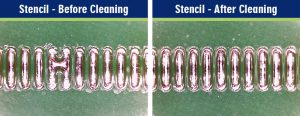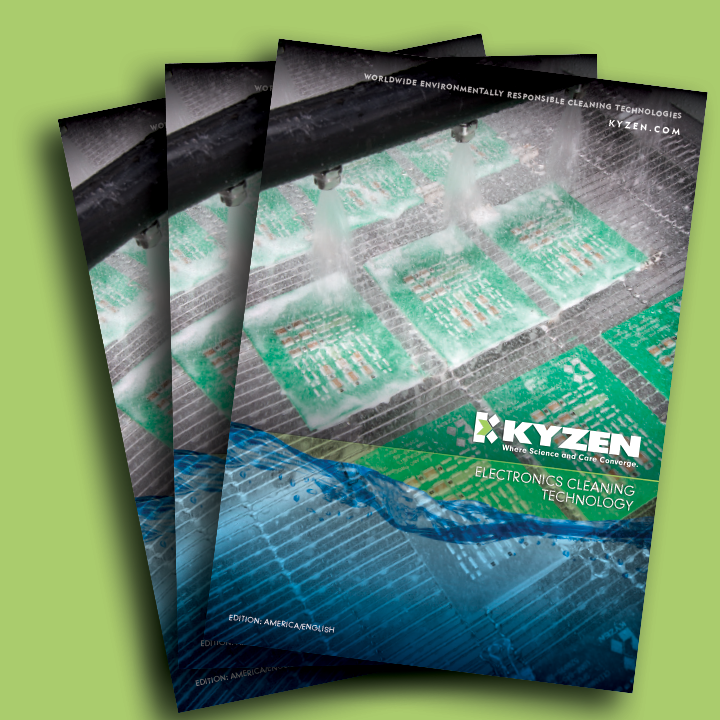Understanding How On Printer Understencil Wipe Cleaning Works
With the changes in printed circuit board assemblies due to miniaturized electronic components and highly dense interconnects, stencil cleanliness is more important now than ever. As interest in understencil wiping steadily increases, it’s good practice to understand how the process works and which chemistries work best.
- First, the on printer understencil wipe process begins with a roll of fibrous material that is used, as the name implies, for wiping across the underside of the stencil and removing soils.
- From this point, the stencil printing machine software provides the operator with a recipe of options for programming a specific wipe sequence. Such sequence can include a dry wipe, wet wipe, vacuum wipe, and more.
- Each step in the wiper sequence traverses back across the stencil in the opposite direction of the previous wiper sequence for maximum results.
Best Cleaning Practices with On Printer Understencil Wiping
A critical requirement for best cleaning the bottom side of the stencil is to rapidly dissolve the flux component within the solder paste. This allows the solder spheres to be released and become easily picked up with the wiping paper.
If solder paste builds up on the bottom side of the stencil, it will bleed out and transfer to the next board printed. Eventually, this will bridge the solder pads, increasing leakage risks when running no-clean processes (Figure 1). On fine feature parts, the solder paste bleed must be removed to prevent it from bridging across the solder pads in this way.

Figure 1: Preventing Flux Bleed eliminates bridging across solder pads
As mentioned earlier, there are various stencil wipe sequences that can be used. A common sequence starts with a wet wipe then followed by a vacuum wipe which attracts stray solder balls and removes trace levels of the previous wipe solvent into the wiper roll. Both KYZEN E5631J and CYBERSOLV C8882 are ideal wet wipe solvents that are non-toxic, compatible with stencil printers, and rapidly dissolves a wide range of flux compositions and dries similar to IPA. The drying feature is a critical KYZEN stencil cleaning design factor.
KYZEN E5631J is an effective, ready-to-use solution that removes raw solder paste from stencils to ensure every print counts. Because KYZEN E5631J is a ready-to-use, pour-and-go solution, it reduces setup time making it a cost-effective solution that is also environmentally and worker-friendly.
CYBERSOLV C8882 solvent-based solution dissolves the flux composition, which reduces the level of flux on the bottom side of the stencil. CYBERSOLV C8882 works well for both coated and non-coated stencils.
